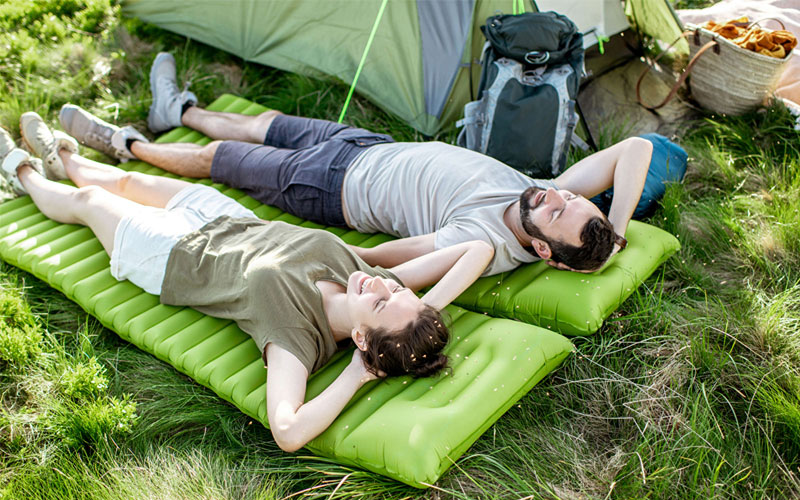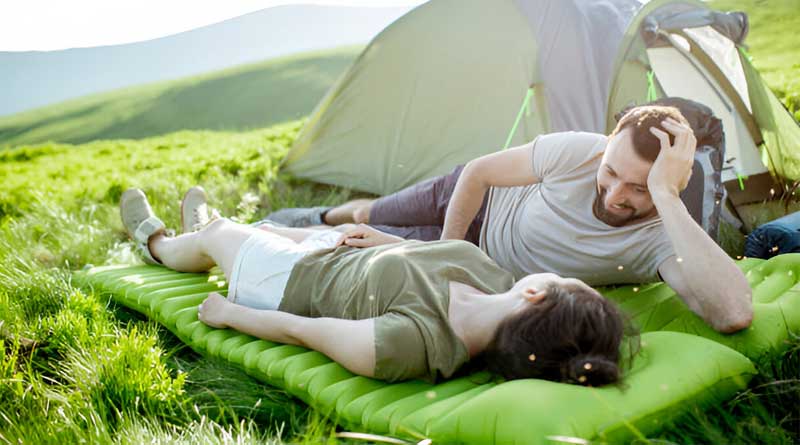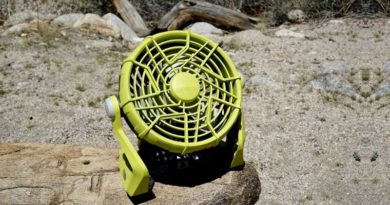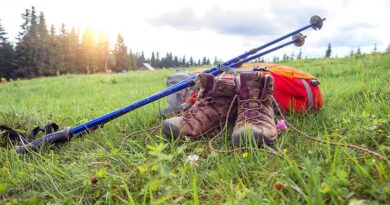Best Camping Mattresses for Bad Backs of 2025
Finding the right camping mattress can be hard if you have a bad back. A good mattress gives proper support. It also keeps your spine in a healthy position. This helps you sleep better and wake up without pain. Not all camping mattresses are the same. Some are too thin or too soft for back support. In this guide, we list the best camping mattresses for bad backs. We looked at comfort, support, and portability. These mattresses are great for car camping or backpacking. They help reduce pressure on your back and hips. With the right choice, you can enjoy camping again. Even with back pain, restful sleep is possible outdoors.
1. Therm-a-Rest MondoKing 3D
Type: Self-inflating mat
Dimensions: 77 x 25 x 4.25 in. (L)
Weight: 4 lb. 6.0 oz.
R-value: 7
The Therm-a-Rest MondoKing 3D is a very comfortable camping mattress. It uses a self-inflating design with a soft foam core. The mattress is 4.25 inches thick and offers great support for your back. Vertical sidewalls let you use the full surface without feeling like you’re slipping off. The foam is soft yet firm enough to keep your spine in line. It’s great for people who wake up with back pain. The fabric feels nice and is also tough and tear-resistant. New valves make it easy to inflate and deflate. It also packs smaller than the older version. This makes it easier to store and carry on trips.
The MondoKing 3D is designed for campers who want real comfort. The stuff sack also works as a pump, which helps a lot. You don’t need to buy anything extra to get it fully inflated. The updated foam design also makes the mat easier to roll up. This mattress feels strong and well made. It’s built to handle many nights outdoors. Even with regular use, it keeps its shape and support. If you struggle with back pain, this mat offers the support you need. It’s great for car camping and longer trips. It might be big, but the comfort is worth it.
Pros:
-
Thick and supportive foam
-
Easy to inflate and deflate
-
Durable and soft materials
-
Stuff sack doubles as a pump
Cons:
-
Bulky to pack
-
Not ideal for ultralight backpacking
2. REI Co-op Camp Dreamer XL
Type: Self-inflating mat
Dimensions: 78 x 32 x 4 in.
Weight: 6 lb. 6.0 oz.
R-value: 6.6
The REI Co-op Camp Dreamer XL is perfect for campers who have hip or back pain. It’s big, soft, and warm. The mat is 32 inches wide and 4 inches thick. That gives plenty of space and support for your back. It feels more like a real bed than a camping mat. The R-value of 6.6 keeps you warm in spring, summer, and fall. It’s a great choice for people who want a cozy night outdoors. The surface is soft, and the foam gives nice cushioning. This mat feels stable and helps reduce pressure on sore backs. It’s ideal for car camping trips.
There are some downsides to consider. The mat is heavy and bulky, even when packed down. It weighs over 6 pounds. It also takes up a lot of room in your car or tent. If you move around a lot while sleeping, the wide size is helpful. But for others, it might feel too big. Some users have reported leaks and durability problems over time. That makes it less reliable than some top competitors. For rough use or regular camping, you might want something more durable. Still, for occasional trips or comfort-first campers, it’s a good pick. It gives a home-like feel under the stars.
Pros:
-
Very spacious at 32 inches wide
-
Thick foam for great comfort
-
Warm enough for 3-season use
-
Soft and supportive sleeping surface
Cons:
-
Bulky and heavy
-
May be too wide for smaller tents
-
Some durability and leak concerns
3. Exped MegaMat Duo 10

Type: Self-inflating mat
Dimensions: 77.6 x 52 x 4 in. (LW Double)
Weight: 9 lb. 14.7 oz.
R-value: 8.1
The Exped MegaMat Duo 10 is a top pick for couples who want comfort while camping. It’s 52 inches wide and 4 inches thick. That’s plenty of room for two people to sleep well. The foam is soft but supportive, which helps with back pain. Vertical sidewalls give the mattress a flat surface from edge to edge. It feels more like a bed than a sleeping pad. Inflation is simple with two large valves. The mat self-inflates and only needs a few pumps to finish. It also works well as a guest bed at home. This mat is all about luxury and comfort.
There are some downsides to note. It’s not ideal for solo camping due to its large size. It also takes up a lot of space when packed. The included foot pump is not very strong. It’s better for small adjustments, not full inflation. You may want to buy a better pump. Also, it’s heavy and not easy to carry far. While you get two-person comfort, you lose some flexibility. Still, the build quality is excellent and should last for years. If you often camp as a pair, it’s a great pick. The comfort is hard to beat in this size range.
Pros:
-
Super comfortable for two people
-
Thick, supportive foam
-
Easy to inflate and deflate
-
Great for home use too
Cons:
-
Bulky and heavy
-
Foot pump is weak
-
Not ideal for solo campers
4. Nemo Roamer
Type: Self-inflating mat
Dimensions: 78 x 30 x 4 in. (XL Wide)
Weight: 5 lb. 8.0 oz.
R-value: 6
The Nemo Roamer is a great camping mat for comfort and packability. It’s 4 inches thick and feels soft yet supportive. The surface is wide and flat, which helps if you move around at night. It self-inflates and has easy-to-use valves for quick setup and takedown. The fabric feels soft but is also tough and long-lasting. It’s made with recycled materials, which is a nice touch. You can also connect two Roamers together using built-in toggles. This makes it a great choice for couples or families. The XL Wide version gives you extra space without feeling bulky in your tent.
The Roamer is a little less plush than the MondoKing or MegaMat. But the difference is small and hardly noticeable. What really stands out is how small it packs down. At just 10 x 16 inches, it fits in tight car spaces easily. That’s a big plus if you’re packing for a group. It also feels solid and warm even in cold weather. The price is high, but you’re paying for premium comfort and great design. It’s a smart pick for anyone who camps often and needs comfort without bulk. For weekend trips or long getaways, the Roamer is a reliable and cozy mat.
Pros:
-
Soft and supportive foam
-
Packs down small for its size
-
Easy to inflate and deflate
-
Made with recycled materials
Cons:
-
Expensive
-
Slightly less plush than top competitors
View at REI View at Backcountry
5. NEMO Quasar 3D Insulated
Type: Air mat
Dimensions: 76 x 25 x 3.5 in. (LW)
Weight: 2 lb. 1.0 oz.
R-value: 3.3
The NEMO Quasar 3D Insulated is a great all-around sleeping pad. It’s light, durable, and packs down small. With an R-value of 3.3, it works well for three-season trips. The gently curved baffles keep you centered while sleeping. This design helps prevent rolling off during the night. It’s also great for side sleepers and larger campers. The 30-denier fabric feels soft and quiet, yet holds up to rough use. The pad inflates quickly using the Vortex pump sack. The micro-adjustable valve lets you fine-tune firmness easily. It’s a solid mix of comfort and portability for backpackers, paddlers, and campers alike.
This pad isn’t the lightest, but it’s worth the weight for the comfort it gives. Even big and tall users report solid support all night. At 6’6″ and 285 lbs, one user said it held up perfectly. No leaks or issues, just use a ground sheet for extra care. It’s made from 100% recycled materials, which is better for the planet. The included stuff sack and repair kit are handy extras. It may not be plush like luxury car-camping mats, but it beats most air pads for comfort. If you want a lightweight pad without giving up sleep quality, the Quasar is a great pick.
Pros:
-
Lightweight and compact
-
Supportive for larger sleepers
-
Durable and soft fabric
-
Easy to inflate and adjust
Cons:
-
Not the lightest pad available
-
Needs ground protection for best durability
View at REI View at Backcountry
6. Hest Foamy Sleeping Pad
Type: Memory foam mat
Dimensions: 78 x 25 x 3.9 in. (Regular)
Weight: 11 lb. 0 oz.
R-value: 8.8
The Hest Foamy Sleeping Pad is all about comfort and simplicity. It uses two thick layers of memory foam for great support. The foam feels soft but still holds your body well, even for side sleepers. Setup is super easy—just unbuckle and let it expand. Packing up is quick too with the built-in straps. It includes smart features like a small pocket for your phone and a washable cover. There’s even a welcome mat for dirty shoes. The bottom fabric is waterproof, which helps in wet campsites. If you want a mattress that feels like your bed at home, this is it.
The main downside is its size. When rolled up, it’s big and takes up a lot of space. At around 15 inches thick when packed, it’s best for car camping. It’s not ideal for backpacking or small vehicles. In cold weather, the foam can get a little firm, but the high R-value keeps you warm. Despite this, the comfort level stays high. We tested it in chilly weather and still slept well. It’s perfect for families or anyone who wants an easy setup and soft night’s sleep. If you’ve got room to spare, this mat is hard to beat for camping comfort.
Pros:
-
Very comfortable memory foam
-
Easy to set up and pack
-
Machine-washable cover
-
Handy features like phone pocket and welcome mat
Cons:
-
Bulky when rolled up
-
Foam gets firmer in cold weather
7. REI Co-op Trailmade
Type: Self-inflating mat
Dimensions: 72 x 25 x 1.5 in. (Regular Wide)
Weight: 3 lb. 0 oz.
R-value: 5.5
The REI Co-op Trailmade is an affordable thin camping mattress. It’s warm, comfortable, and simple to use. With an R-value of 5.5, it keeps you insulated during cool nights. The soft fabric top adds a nice touch for better sleep. At just 3 pounds, it’s light enough for short backpacking trips. The pad also uses recycled polyester, which is a great eco-friendly feature. It may not have extra features, but it gets the basics right. If you need a reliable pad without spending much, the Trailmade is a smart pick for casual camping.
Still, the Trailmade has a few flaws. It packs down much larger than similar pads, which isn’t great for small spaces. The packed size is bulky compared to others with the same sleeping area. It’s also just 1.5 inches thick, so it may feel too firm for side sleepers. Back sleepers and easygoing campers might not mind the thinner cushioning. But if you toss and turn or like a plush pad, this one may fall short. Despite these issues, it offers decent warmth and build quality for the price. It’s not fancy, but for basic comfort on a budget, the Trailmade holds its own.
Pros:
-
Great insulation with R-value of 5.5
-
Soft top fabric feels nice
-
Lightweight for short backpacking trips
-
Eco-friendly materials
Cons:
-
Bulky when packed
-
Thin cushioning not ideal for side sleepers
Best Camping Mattresses for Bad Back: Summary
| MATTRESS | TYPE | DIMENSIONS | WEIGHT | R-VALUE |
|---|---|---|---|---|
| Therm-a-Rest MondoKing 3D | Self-inflating mat | 77 x 25 x 4.25 in. (L) | 4 lb. 6.0 oz. | 7 |
| REI Co-op Camp Dreamer XL | Self-inflating mat | 78 x 32 x 4 in. | 6 lb. 6.0 oz. | 6.6 |
| Exped MegaMat Duo 10 | Self-inflating mat | 77.6 x 52 x 4 in. | 9 lb. 14.7 oz. | 8.1 |
| Nemo Roamer | Self-inflating mat | 78 x 30 x 4 in. | 5 lb. 8.0 oz. | 6 |
| NEMO Quasar 3D Insulated | Air mat | 76 x 25 x 3.5 in. | 2 lb. 1.0 oz. | 3.3 |
| Hest Foamy Sleeping Pad | Memory foam mat | 78 x 25 x 3.9 in. | 11 lb. 0 oz. | 8.8 |
| REI Co-op Trailmade | Self-inflating mat | 72 x 25 x 1.5 in. | 3 lb. 0 oz. | 5.5 |
How to Choose Camping Mattresses for Bad Back?

Camping is a great way to enjoy nature and relax. But if you have a bad back, sleeping outdoors can be tough. A poor mattress can cause pain, stiffness, and restless nights. That’s why choosing the right camping mattress is very important. A good mattress gives your back the support it needs. It helps you sleep better and wake up without pain. In this guide, we’ll explain how to pick the best camping mattress for bad hips and back.
Understand Your Back Needs
Everyone’s back is different. Some people need firm support, while others prefer a soft surface. If you have lower back pain, your mattress should keep your spine straight. It should also support your hips and shoulders. You don’t want your body to sink too far. That puts pressure on your back and causes pain. So, the first step is knowing what kind of support your back needs.
Look for Enough Thickness
Thicker mattresses are usually better for people with back pain. A thin mat can make you feel the hard ground. This adds pressure to your joints and muscles. Look for a mattress that’s at least 3 inches thick. Some pads are even 4 or 5 inches thick. These provide more cushion and help your body stay in a better position while you sleep.
Choose the Right Material
Camping mattresses come in different types. The most common are air pads, self-inflating mats, and foam pads. Foam pads are soft and easy to use, but they are bulky. Self-inflating mats have foam inside and fill with air when opened. They give good support and are easier to pack. Air pads are light and compact but often not firm enough for bad backs. If you pick an air pad, choose one with extra support or baffles. Memory foam mats are very comfortable but are also heavy. They are best for car camping, not backpacking.
Support Matters Most
A mattress for back pain must offer good support. It should keep your body in a straight line. Your spine should not bend in odd ways. Firmness is key here. A very soft pad can feel good at first but will not support your back well. A firm mattress keeps your back straight and your weight balanced. Try to choose a mattress that feels solid but still has some softness for comfort.
Insulation and Warmth
Camping can get cold, even in summer. A cold pad can make your muscles tense up. This is not good for hip pain. Make sure your mattress has good insulation. Look for something with an R-value of at least 4. Higher R-values mean better warmth. Self-inflating mats and foam pads usually have higher R-values. This will help keep your back muscles relaxed and warm through the night.
Packed Size and Weight
If you’re camping close to your car, size and weight may not matter much. But for hiking or backpacking, you’ll want something lighter. Foam and memory foam pads are bulkier and heavier. Air and self-inflating pads are easier to carry. Just make sure the pad is still supportive. Don’t sacrifice your back comfort just to save weight.
Durability and Materials
A good camping mattress should last many trips. Choose one made with strong fabrics. Look for tear-resistant or water-resistant materials. If your mattress leaks or flattens out at night, your back will suffer. Durable mattresses hold their shape better and keep giving support every night. Some even come with washable covers, which is nice if you camp often.
Ease of Setup
If you have back pain, bending over and blowing up a pad can be hard. Choose a mattress that is easy to set up. Self-inflating mats are simple. You just open the valve and let them expand. Some air mattresses come with pumps or stuff sacks that help inflate the pad. This saves effort and avoids back strain before bed.
Think About Your Sleeping Style
The way you sleep affects what mattress you need. Back sleepers usually need medium firmness. Side sleepers need softer pads to support their hips and shoulders. Stomach sleepers often need firmer pads to keep their back from arching. Knowing how you sleep helps you pick a mattress that fits your body. The right shape and firmness reduce pain and help you rest better.
Test at Home First
Before heading out to camp, try your new mattress at home. Lay on it for a few nights. Check if it gives you the support your back needs. This helps avoid surprises when you’re far from home. If the pad is too soft or too firm, you can return it or try something else.
Look for Real User Reviews
Reading reviews from other campers with back pain can be helpful. See what they liked and didn’t like. Look for comments about comfort, support, and warmth. Real stories can tell you how a mattress performs in the wild. You’ll also learn how well it holds up after many uses.
Bring Extra Support If Needed
Sometimes, even the best mattress may not be enough. You can bring a foam topper or a small pillow for extra support. Some people like using a rolled-up blanket under their knees or lower back. These small changes can make a big difference in your sleep comfort. Try different setups to find what works best for you.
Balance Cost and Comfort
You don’t have to buy the most expensive mattress to sleep well. But don’t go too cheap either. Very cheap pads often lose air, flatten out, or wear down fast. Think of your mattress as an investment in good sleep. Spending a bit more for better support is worth it if it helps your back feel better.
Conclusion
Camping with a bad back doesn’t have to mean sleepless nights. With the right mattress, you can rest well and wake up pain-free. Focus on finding a pad that offers strong support, good thickness, and enough warmth. Make sure it suits your sleeping style and is easy to set up. Don’t rush your choice—test it first if you can. A little planning goes a long way. With the right gear, you can enjoy the outdoors and sleep just as well as you do at home.










